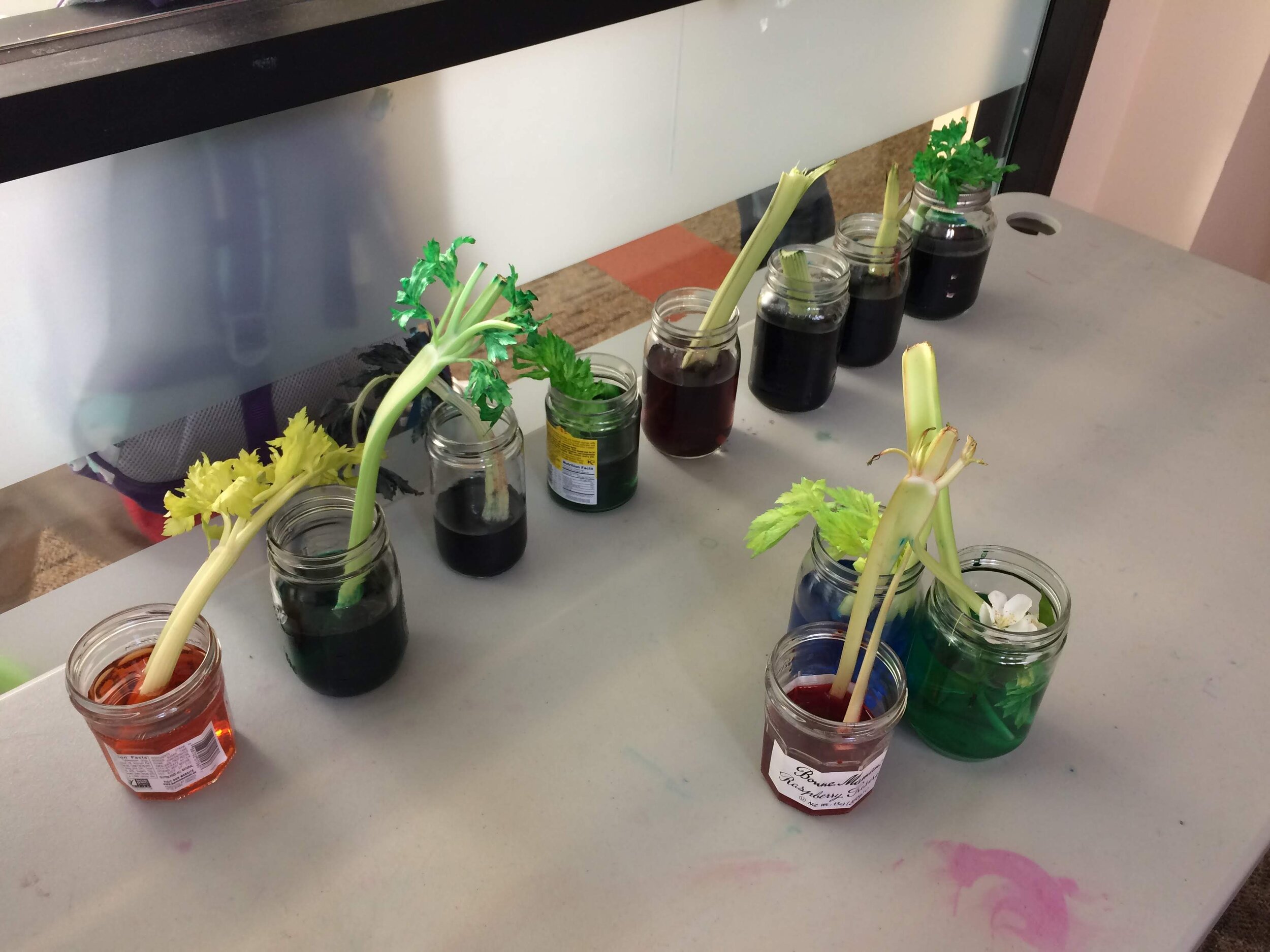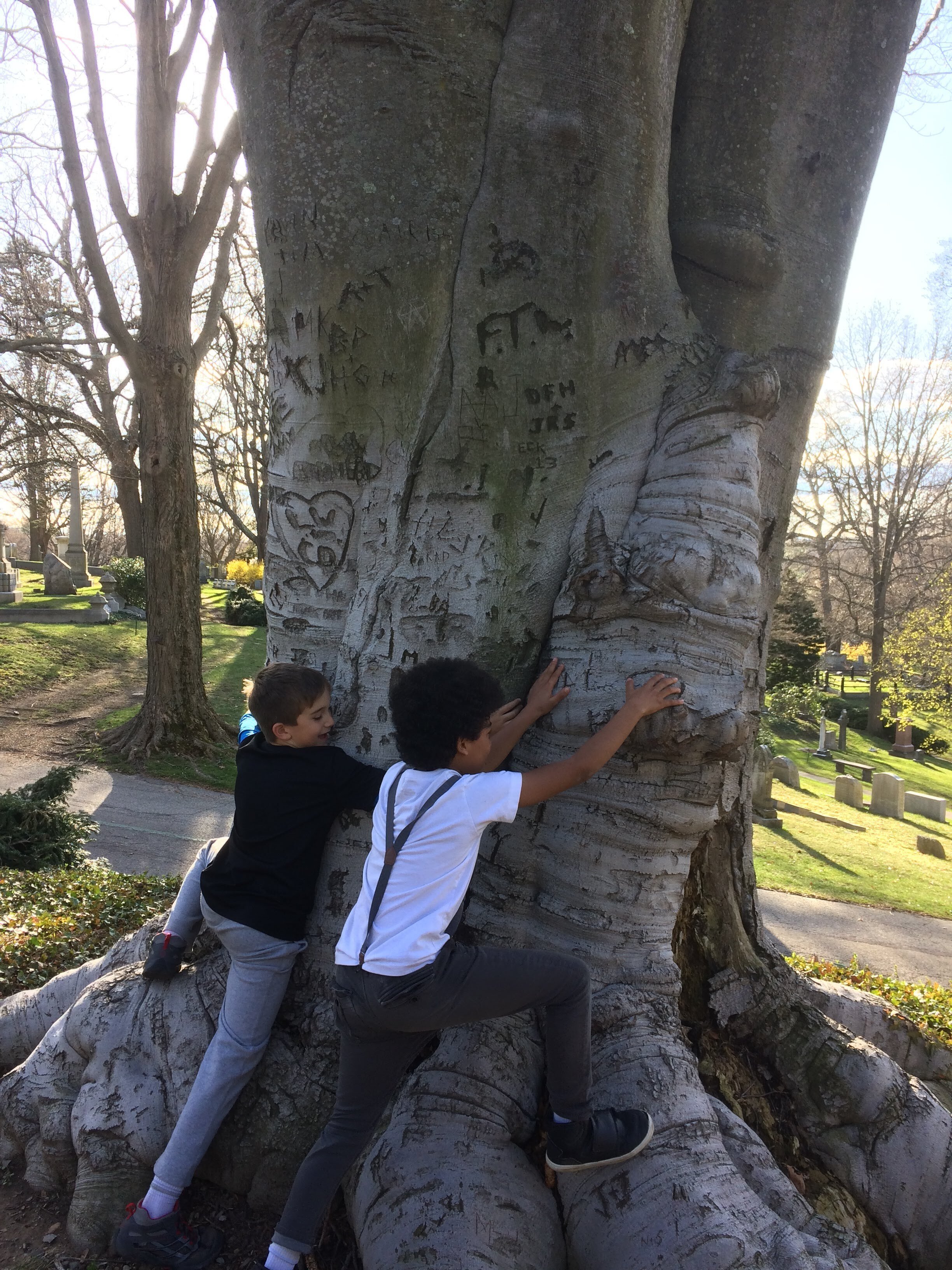#6: Water Chemistry
Happy Wednesday!
We hope you all had a great week. Since it looks like there will be more rain this week, we have some more water activities for you all. From celery dying to lava lamps, these activities explore chemistry concepts like density, surface tension, adhesion, and cohesion.
We would love to hear how you all have been doing, how at-home learning has been, and how are activities are going if you’ve tried any of them. We would love to see some photos! You can reach us any time at wonderlabsteam@gmail.com.
Sink or Float
Explore density with a tub of water and object you can find. Make predictions on what will float and what will sink and test it out. Density is a measurement that compares the amount of matter an object has to its volume, or how tightly packed molecules are in an object. Objects that are more dense than water will sink, and objects that are less dense will float.
This can be a casual exploration or science experiment. For an experiment, write down your predictions, record the results, and discuss them. If you want to explore more, see if you can make things sink or send your kid off on a scavenger hunt to find things they think will float.
Want something harder? See if you can measure how dense something is by either measuring the mass and volume or by how it floats in the water?
Make it Float
Guess if you think a paper clip will float in water, and test it out. You’ll see that it sinks, but you can make it float? Have them try out different ideas. Maybe they want to change the shape or use a household object that floats. You should have them figure out a way on their own, but you can either gently put it on the water with another paper clip, or float a paper towel with the paper clip on top and gently remove the paper towel. Talk about what works, what helps, and what didn’t work.
The density of the paper clip and water didn’t change, so why is it floating? Water particles are cohesive, meaning they like to stick together. A high surface tension means that because the particles are sticking so tightly together, it will be harder to separate them. So if you figure out how to place the paper clip gently onto the water without disrupting the surface tension, you can get things to float. This is how water bugs sit on top of lakes and pond. They would normally sink, but they are light enough and gentle enough to keep the surface tension in tact.
Once it floats, ask what will happen if you put soap in the water. Or better yet, see if they can make it float in soapy water (any liquid soap/detergent should be fine). Soap is good for breaking up germs and water, something we explored in our virus science activities. But by breaking up the water molecules, it lowers the surface tension and isn’t strong enough to hold it.
Celery Dying
Have you ever put white flowers into a jar of water with food coloring? If you haven’t, the food coloring will dye the flower - and the same thing works with celery. Place the celery in a container with water mixed with food coloring. Ask them what they expect to happen. Do different colors work better than others? Does the size or color of the celery change the results? Leave the containers in a spot where they won’t be disturbed and check on them each day.
When water particles stick together, it’s called cohesion. When water particles stick to other surfaces, it’s called adhesion. In narrow tubes, like the stem of a plant, water molecules will stick to the walls (adhesion) but stay with other water molecules (cohesion). In the right conditions, water can climb upwards. This is called capillary action. It’s how water spreads throughout a plant, and how the food-colored water spread throughout the celery.
Need more? Here’s a great resource for this activity.
Separation Anxiety
This activity is a quicker and colorful way to explore capillary action. You’ll need markers, a coffee filter, scissors, and a clear container of water. Cut the coffee filter into a long strip and color a small line at the bottom of the strip. Stick it into the water and see the color move up the paper through capillary action. You can also try to make art or use capillary action to mix colors with this technique.
Need more? This is a great resource with video exploring the activity and the science behind it
even More Water Projects
Explore density by making lava lamps
Use water bottles to introduce buoyancy or convection
Phase changes and density with an ice balloon
Like our celery dying activity, longer term projects like making salt crystals give kids things to look forward to and observe change. We also have more outdoor and long term projects on our educator resource page.
Nature Spotlight
With the seasons changing and everything coming to life, now’s a great time to make Faces for the Trees and bring them to life too. This activity is better left open-ended - see what your kids can find and create with just natural materials and their imaginations. If they need a place to start, have them start looking for materials to inspire them. Can they find something rough, soft, or hair-like? Can they find something new that spring has brought?
What we’re reading
GREEN PAUSE in Times of COVID-19 by Julián Ruiz Sáez is a short but insightful read on simple ways to practice mindfulness outside, with short walks, nature journals, guided practices and more.
The Trust for Public Land explores Five Takeaways on Nature and Health During Coronavirus and our relationship with the outdoors during the pandemic.
So Many of Our Kids are Regressing Right Now. What Can We Do About It? by Meghan Fitzgerald takes a perceptive look into children’s changing support needs.
Now’s a Good Time to Teach Your Kids to Play on Their Own by Kate Rope offers practical advice on nurturing independent exploration and curiosity
That’s all for this week. Got a question or suggestion? Feel free to email us at wonderlabsteam@gmail.com

